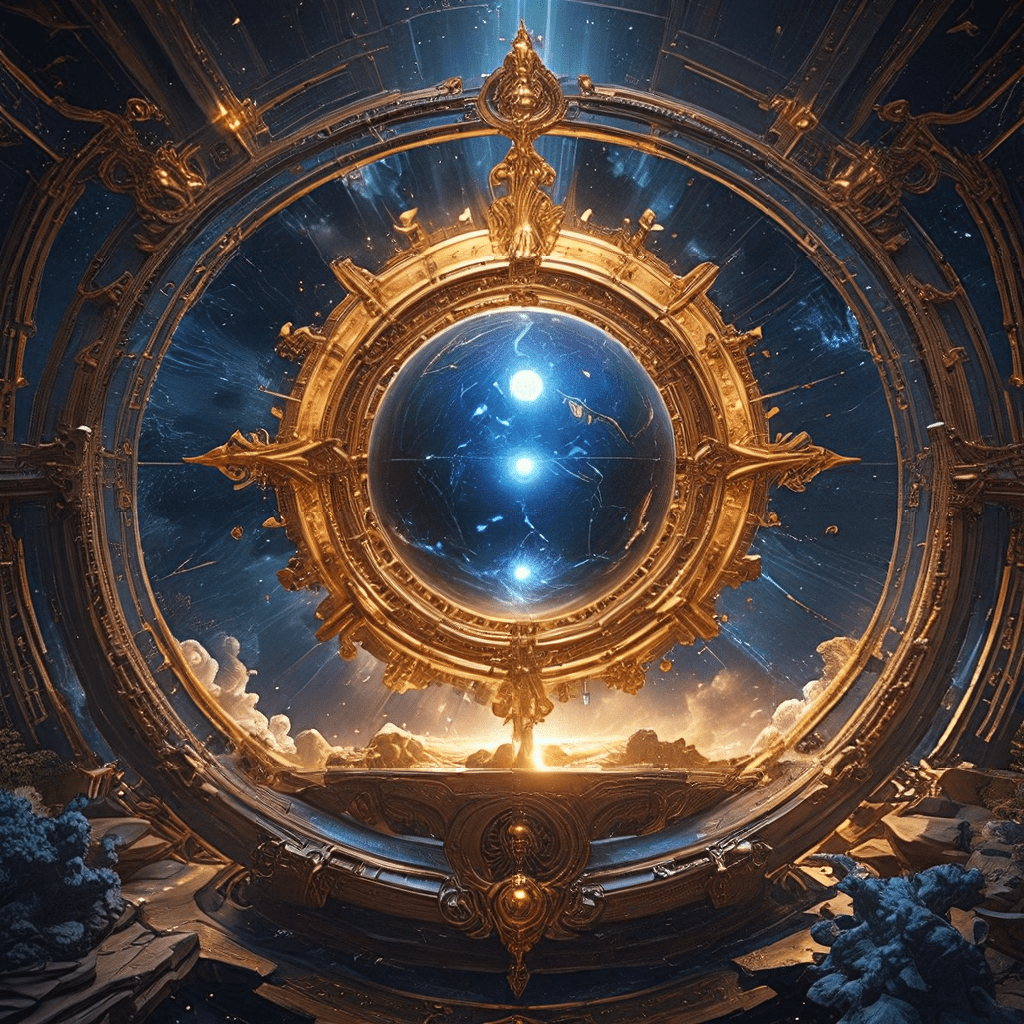The Divine Blueprint: Egyptian Cosmology and the Role of the Gods
1. Introduction: The Cosmic Order – Ma’at
Ancient Egyptians believed in a cosmic order, a fundamental principle of balance and harmony called Ma’at. This concept extended beyond the physical world, encompassing truth, justice, and the moral code that governed society. Ma’at was a vital force that sustained the universe and ensured its stability. It was believed that the cosmos, human society, and even the individual soul thrived when aligned with Ma’at.
The Egyptians integrated Ma’at into their daily lives. They sought to uphold justice, maintain order, and practice ethical behavior, striving to live in harmony with the divine blueprint. The concept of Ma’at resonated deeply in their belief system, serving as a foundation for their understanding of the cosmos and their place within it.
2. Creation Myths: The Genesis of the Universe
The Egyptians developed elaborate creation myths to explain the origins of the universe. One prominent narrative involved the Ogdoad, eight primordial deities existing before the world was formed. They represented the forces of chaos and darkness that existed in the primordial state. From this chaotic realm emerged Atum, the self-created god, who embodied the essence of creation.
Atum, often depicted as a self-born being, brought forth light and order from the darkness. Using his own power, he created the world and gave birth to the first gods. This act of creation marked the transition from chaos to order, establishing the foundations of the cosmos. The emergence of light, order, and life from primordial chaos highlighted the importance of maintaining balance and harmony, aligning with the concept of Ma’at.
3. The Ennead of Heliopolis: The Divine Family
The Ennead of Heliopolis, a group of nine gods, played a central role in Egyptian cosmology. This divine family emerged from Atum and represented the forces of creation, order, and life. It included deities such as Ra, the sun god, Shu, the god of air, and Tefnut, the goddess of moisture. These gods were responsible for shaping the physical world, establishing the natural order, and ensuring the continuity of life.
Ra’s journey across the sky each day symbolized the cycle of life, death, and rebirth. His daily voyage represented a cosmic struggle against chaos, maintaining Ma’at and ensuring the world’s continued existence. The Ennead represented a divine family that governed the cosmos, ensuring its stability and perpetuating the cycle of creation and renewal.
4. The Underworld: Duat and the Journey of the Dead
Death in Ancient Egyptian belief was not the end but a transition into the afterlife. The journey of the deceased led them to the Duat, the underworld, ruled by Osiris, the god of the dead. After death, the soul faced a series of trials and judgment, guided by Osiris and the goddesses Isis and Nephthys.
The deceased were weighed against Ma’at, the feather of truth, to determine their fate. Those who lived a righteous life and aligned with Ma’at were allowed to enter the afterlife, while those who did not were condemned to a fate of eternal darkness. The concept of the afterlife and the journey of the dead emphasized the importance of living a virtuous life and embodying Ma’at, both in this world and the next.
5. The Divine Hierarchy: Kingship and Divine Power
The Pharaoh, the ruler of Ancient Egypt, was considered a divine intermediary between gods and humans. He was believed to be descended from Ra, the sun god, and possessed the divine power to maintain Ma’at on Earth. This divine connection granted the Pharaoh authority and responsibility to uphold justice, protect the nation, and ensure the prosperity of the people.
The Egyptians believed that gods played an active role in political power and daily life. They sought divine patronage and made offerings to specific deities for protection, guidance, and success. The Pharaoh’s role as the divine intermediary highlighted the importance of maintaining a harmonious relationship with the gods, aligning with the principles of Ma’at and ensuring the wellbeing of the kingdom.
6. The Great Cosmic Cycle: From Creation to Destruction
The Ancient Egyptians believed in a cyclical view of time and the cosmos. Creation, order, and destruction were not linear processes but part of a continuous cycle. While Ma’at represented balance and harmony, the concept also encompassed the inevitable forces of chaos and destruction.
Set, the god of chaos and destruction, played a significant role in this cosmic cycle. He represented the forces that threatened Ma’at and challenged order. His battles with other gods, particularly with Osiris, symbolized the constant struggle between order and chaos. This cyclical view of the cosmos emphasized the importance of maintaining balance and accepting the inevitability of change, acknowledging that even destruction could lead to renewal and a new beginning.
7. The Significance of Animals and Animal-Headed Gods
Animal imagery played a significant role in Ancient Egyptian mythology and religion. Many gods were depicted with animal heads, which symbolized their unique powers and attributes. The Egyptians saw a deep connection between the natural world and the divine realm, believing that animals possessed supernatural qualities.
The animal-headed gods represented various aspects of the divine realm and the forces of nature. For example, Bastet, the goddess of protection and fertility, was depicted with a cat’s head, symbolizing her grace, agility, and maternal instincts. Anubis, the god of the dead, had the head of a jackal, signifying his role in guiding the deceased to the afterlife. These animal-headed gods highlighted the interconnectedness of the natural world, the divine realm, and the human experience.




